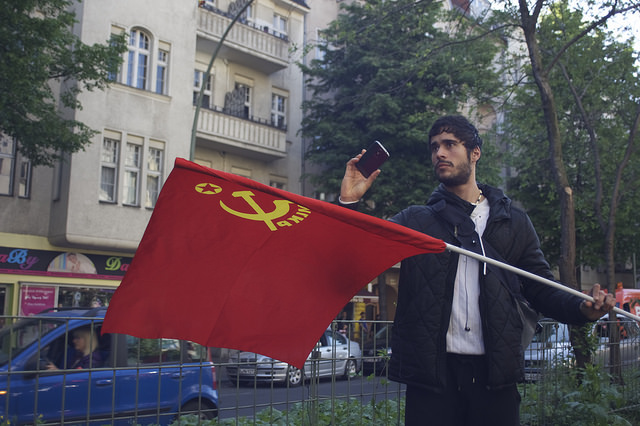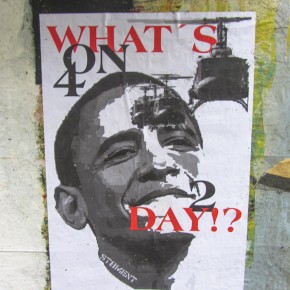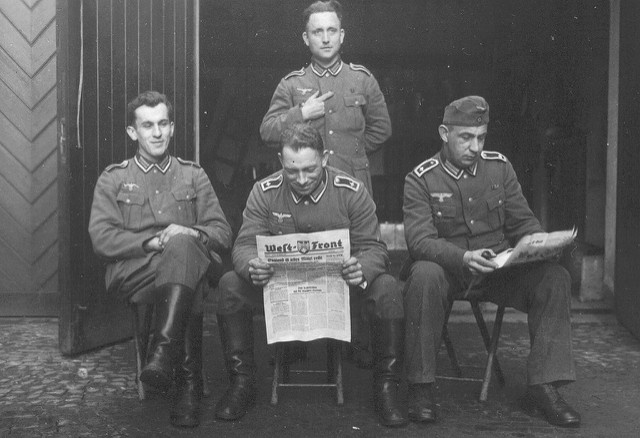A glance at the photo inspires a tortuous quest for meaning. The handsome man, presumably of Middle Eastern descent, strikes a pose that would please the most severe proponent of Socialist Realism. And he has his mobile phone out to document it. Or does he? That’s the beauty of having both a rear and front-facing camera. Mobiles are the mirror-shades of our era.
If he’s trying to photograph something ahead of him, the pose could be pure accident, just the way he happens to look when he’s concentrating. But if he’s taking a selfie instead, the people who lambast today’s young people for being hopeless narcissists will have a field day. What could be more symptomatic of this technology-enabled pathology than documenting yourself instead of the protest you’re conducting?
In the latter case, the hammer and sickle-emblazoned flag could be interpreted as a lure, a way to get people to look his way to see how good he’s looking to himself. Yet despite the faraway look in his eyes, so beloved by the artists who stayed on Stalin’s good side, he might actually be attempting to capture the design on the flag itself. The angle of his phone makes it impossible to tell.
No matter what is actually going on in the shot, though, it is indisputable that this man is out to document something. He isn’t waiting for members of the professional media to show up. Perhaps the revolution will one day end up on television, but only if participants like him take the task of capturing it into their own hands.
That logic might seem depressing to those who remember the days when creating a spectacle was every protest movement’s goal. But the reality is that the superabundance of political content out there these days makes the dream of being covered by the “real” news seem less and less likely. In the end, the best most activists can hope for is that they will end up like this one, a subject of debate far from home.
Commentary by Charlie Bertsch. Photograph courtesy of Joel Schalit, from Nabka Day 2015, in Berlin.





